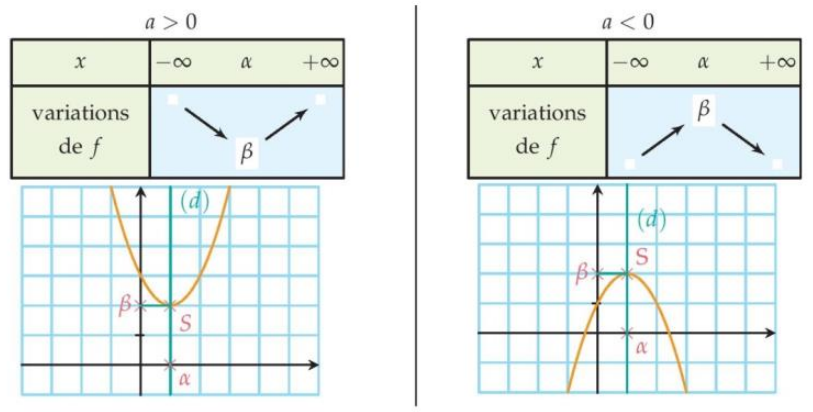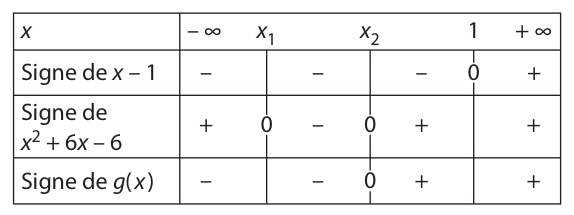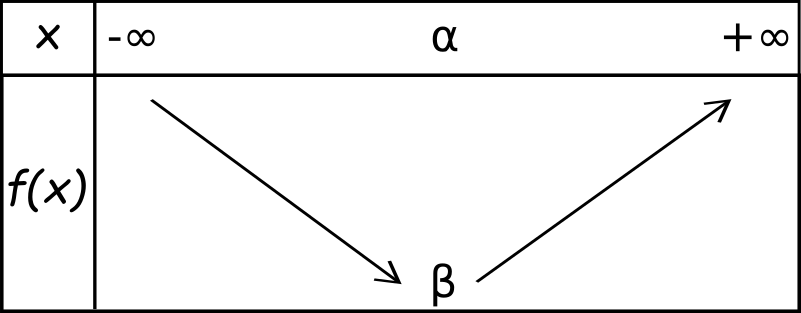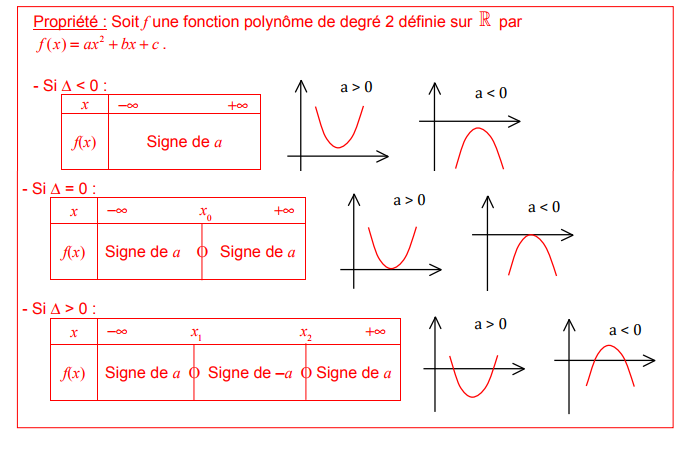Tableau De Variation Polynome Du Second Degré

Bonjour mes amis, fellow sufferers of mathematical Mondays! Today, we're diving headfirst (but carefully, with a helmet of knowledge!) into the glorious world of the Tableau de Variation, specifically for our old friend, the Polynôme du Second Degré. Oh là là, exciting, n'est-ce pas?
Now, I know what you're thinking: "Tableau de Variation? Sounds like something you'd find in a dusty antique shop!" And you're not entirely wrong. But trust me, it's far more useful than a chipped porcelain doll. It's a map! A treasure map, if your treasure is understanding how a quadratic equation behaves. (Okay, maybe not gold doubloons, but intellectual riches are just as sparkly!)
What is this "Tableau" thing anyway?
Imagine a tiny little table, all neat and tidy, showing you where your quadratic equation is going up, going down, or just chilling at its vertex like a mathematical slacker. That's the Tableau de Variation in a nutshell. It's a visual guide to its monotonicité – fancy word for whether it's increasing or decreasing. We like fancy words, don't we?
The Main Ingredients: A Quadratic Recipe
Before we start drawing our masterpiece of a tableau, let's remember our basic quadratic equation: f(x) = ax² + bx + c. Think of it like a cake recipe. You need flour (ax²), sugar (bx), and a little bit of spice (c). And like a cake, the coefficients a, b, and c determine the shape and flavor... I mean, the curve!
Now, here's what we need to figure out:
- The Sign of 'a': Is it positive or negative? This tells us if our parabola is smiling (a > 0) or frowning (a < 0). A smiling parabola is happy, and opens upwards. A frowning parabola clearly didn't get enough coffee.
- The Vertex: This is the turning point, the lowest (or highest) point on our curve. Its x-coordinate is found using the magic formula: x = -b / 2a. Memorize it! Tattoo it on your forehead! (Okay, maybe not the tattoo. But definitely memorize it.)
Building the Tableau: A Work of Art (Almost)
Ready to create our tableau? It's easier than parallel parking, I promise! (Although, that’s not saying much…)
Here's the basic structure:
- A row for x, ranging from -∞ to +∞. Yes, even infinity needs representation.
- A row for f(x), showing the behavior of our equation.
Then, we fill it in:
- Place the x-coordinate of the vertex in the middle of the x row.
- If a is positive (smiling parabola), the arrow in the f(x) row will go down from -∞ to the vertex, then up to +∞. Imagine a slide!
- If a is negative (frowning parabola), the arrow will go up from -∞ to the vertex, then down to -∞. Like a sad, dramatic plunge!
And voilà! You've created a Tableau de Variation. Now you can impress your friends at parties... or at least have something to talk about besides the weather.
Why Bother? The Point of It All
Why go through all this trouble? Because the Tableau de Variation gives you a fantastic visual representation of your quadratic equation. You can instantly see where it’s increasing, decreasing, and reaching its maximum or minimum value. This is super helpful for solving problems, sketching graphs, and generally feeling like a mathematical genius.
Plus, knowing this stuff makes you sound incredibly smart. Try dropping "Mon tableau de variation révèle une monotonicité flagrante!" at your next dinner party. Guaranteed conversation starter (or ender, depending on your audience...).
So, there you have it! The Tableau de Variation for the Polynôme du Second Degré. It's not as scary as it looks, and it's surprisingly useful. Now go forth and dominate those quadratic equations! Just remember, if you get stuck, blame it on the spice in the cake recipe.
Au revoir, and may your parabolas always be smiling (unless, of course, you're going for dramatic effect).


















